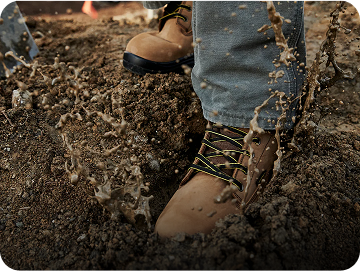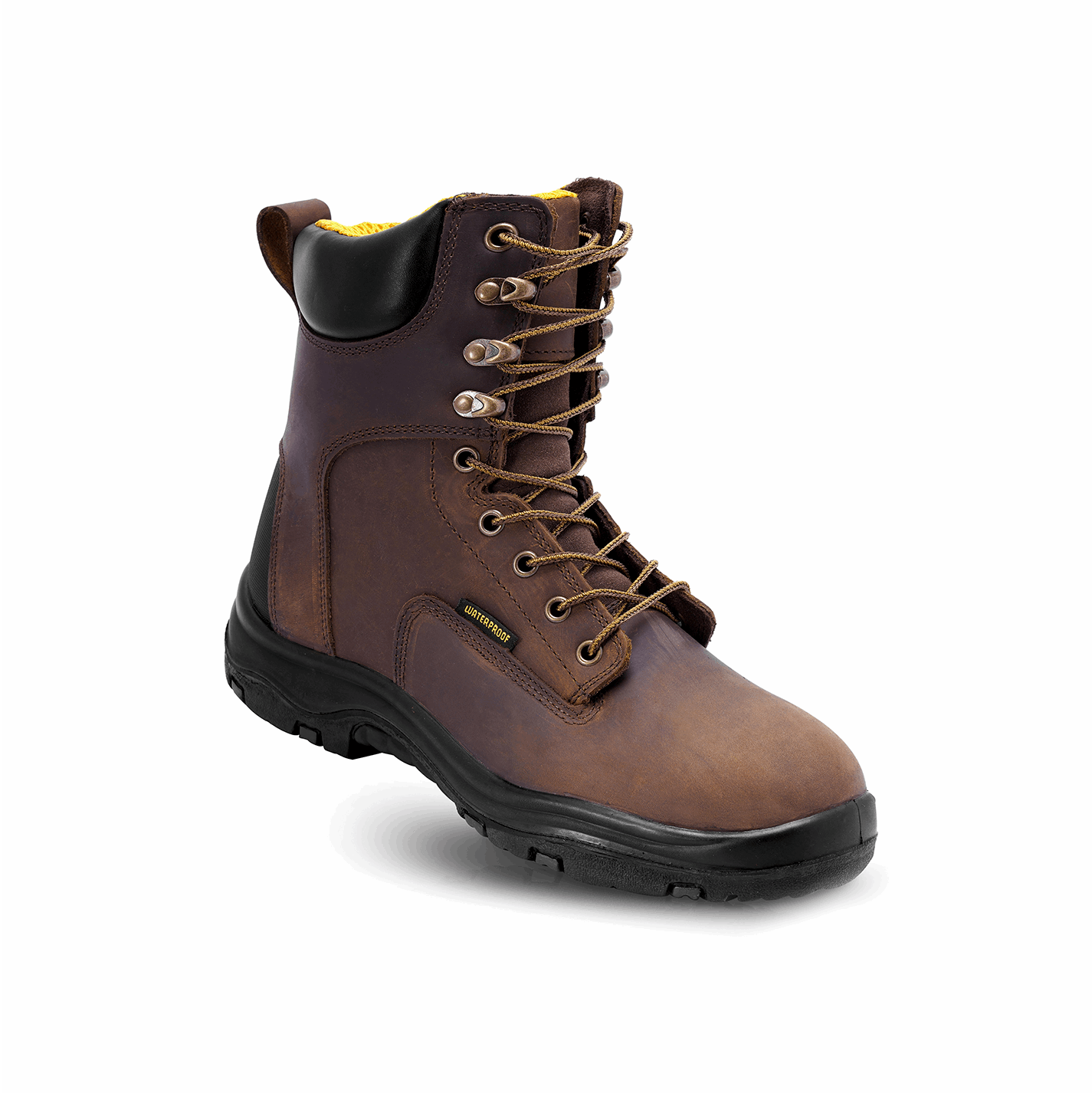Knowing when to replace your work boots can be tricky. How can you tell if the wear and tear is normal, or a sign that they’re on life support? They’re work boots after all. After a few months of daily use, they won’t look and feel as new as when you bought them; does that necessarily mean they need to go?

Risking injury
The problem with wearing boots past their prime is that you can actually put yourself at risk. Given all the walking, lifting and torqueing that you do every day—perhaps on uneven ground—you need sturdy, reliable footwear to protect your feet, ankles and body.
Typically, boots should be replaced within 12 months of purchase, but that’s a pretty big window. If you’re not sure if it’s time, here are some questions to ask yourself:
- How does your back feel?
Your body’s alignment starts with your feet. If your feet are out of place with the ground or you have uneven steps, it will affect your entire body. Whether you’re standing still or taking frequent steps, it sets off a chain reaction that ultimately reaches your spine.
Of course, your spine is central to performing just about any physical task. Overly cushioned heels can cause compression in your spine, but a lack of support can also negatively impact your back as well.
- Do your boots tilt?
Want to see if your boots need to go? Try this simple experiment. Place them on a flat surface and observe how they sit. Do they tilt to one side or another? If they’re not centered, it’s a sign that they’re broken down.
Think of it like your car’s alignment. If you take your hands off the wheel for a quick moment and the vehicle pulls to one side, it usually means you need a tire rotation.
- Have you been slipping?
One of the most important functions of workboots is traction, especially at a worksite. You could be outside navigating loose dirt and dealing with elements such as rain and snow; or you might work indoors in a warehouse or factory where you have to step through water. Either way, a lack of traction in your boots can cause you to slip, potentially resulting in a serious accident.
- Are your boots letting in water?
While not all boots are one hundred-percent waterproof, they should generally keep water out, not let it in. So if your socks have been getting wet, it’s time to take a good look at the condition of your footwear.
Leaking can be caused by anything from loose stitching to cracks, but ultimately the explanation is somewhat irrelevant. The bottom line is you can’t work with wet feet (unless you want an ongoing case of Athlete’s Foot). So unless it’s an easy fix, you’ll need to buy new boots.
How to make your boots last longer
…That said, replacing your boots isn’t always necessary. Regular maintenance and care will extend their life. You can also try these tactics if your work boots are perfectly broken in and your issues with them aren’t too serious:
-
Alternate with a second pair
This is a good solution if you’ve found boots that seem to be made just for you. Adding a second pair into your rotation will let them last longer, and protect your feet more as well.
Again, if your boots are beyond broken in or severely damaged, there’s not much anyone can do. However, if you’re only dealing with minor problems, a professional cobbler may be able to salvage them by fixing the soles and stitching, or replacing the laces.
Learn more about the styles and features of EVER BOOTS products here.










Leave a comment